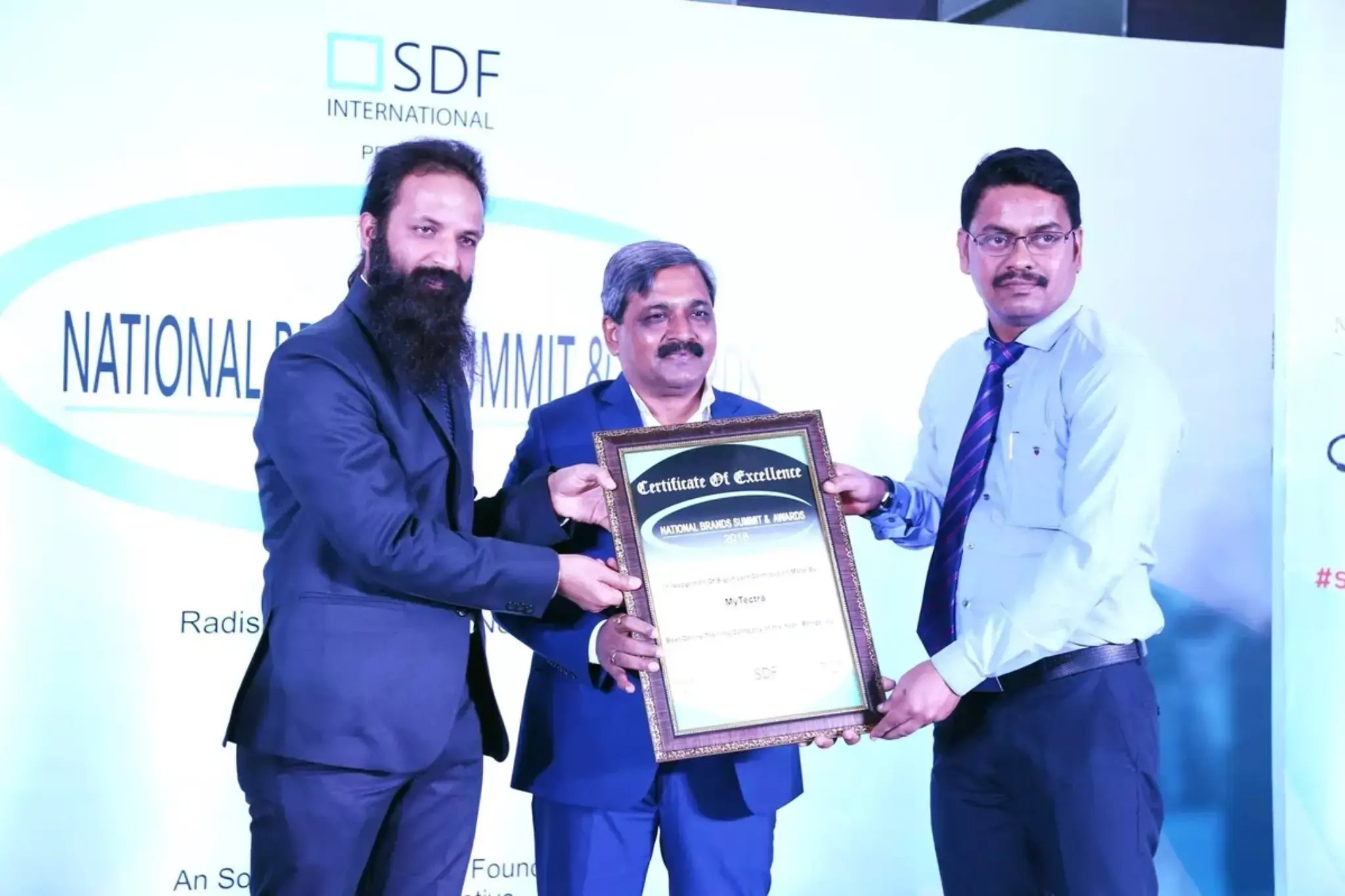Share this course’s details with your family and friends.
IBM Cognos Framework Manager Training
IBM Cognos Framework Manager Training in Bangalore Offered by myTectra is the most powerful IBM Cognos Framework Manager Training ever offered with Top Quality Trainers, Best Price, Certification, and 24/7 Customer Care. Learn Virtually Anywhere. Get Started IBM Cognos Framework Manager Planning Online Training Now!
20% Limited Time Offer
Learn Virtually Anywhere. Award-Winning Training Company.
High-Quality Training Awaits You
Join over 100000+ learners who have taken up training with myTectra. Get High-Quality Training, Certification, Best Price and 24/7 Customer Care.
Key Program Highlights:
- Delivering top-notch education to equip you with essential skills.
- Learn from industry experts with real-world experience.
- A thorough curriculum covering all necessary topics.
- Dedicated support to help you secure job placements.
- High ratings reflecting our commitment to quality.
- Hands-on experience through real-world projects.
- Personalized, engaging learning for better outcomes.










About Program
IBM Cognos Framework Manager Training will train you and provide you with the Cognos Architecture with the information and logic required to access many data sources. Based on an authenticated training curriculum, our trainers will highlight the essential steps to be examined during the design and implementation of Framework model.
This course offers the participants with advanced knowledge of metadata modeling concepts, and how to model metadata for predictable reporting and analysis results using Framework Manager. Participantswill be able to learn the full scope of the metadata modeling process enabling end users to analyze data and author reports.
Curriculum:
Introduction to IBM Cognos Analytics
- Describe IBM Cognos Analytics and its position within an analytics solution
- Describe IBM Cognos Analytics components
- Describe IBM Cognos Analytics at a high level
- Explain how to extend IBM Cognos
Identifying common data structures
- Define the role of a metadata model in Cognos Analytics
- Distinguish the characteristics of common data structures
- Understand the relative merits of each model type
- Examine relationships and cardinality
- Identify different data traps
- Identify data access strategies
Defining requirements
- Examine key modeling recommendations
- Define reporting requirements
- Explore data sources to identify data access strategies
- Identify the advantages of modeling metadata as a star schema
- Model in layers
Creating a baseline project
- Follow the IBM Cognos and Framework Manager workflow processes
- Define a project and its structure
- Describe the Framework Manager environment
- Create a baseline project
- Enhance the model with additional metadata
Preparing reusable metadata
- Verify relationships and query item properties
- Create efficient filters by configuring prompt properties
Modeling for predictable results: Identifying reporting Issues
- Describe multi-fact queries and when full outer joins are appropriate
- Describe how IBM Cognos uses cardinality
- Identify reporting traps
- Use tools to analyze the model
Modeling for predictable results: Virtual star schemas
- Understand the benefits of using model query subjects
- Use aliases to avoid ambiguous joins
- Merge query subjects to create as view behavior
- Resolve a recursive relationship
- Create a complex relationship expression
Modeling for predictable results: consolidate metadata
- Create virtual dimensions to resolve fact-to-fact joins
- Create a consolidated modeling layer for presentation purposes
- Consolidate snowflake dimensions with model query subjects
- Simplify facts by hiding unnecessary codes
Creating calculations and filters
- Use calculations to create commonly-needed query items for authors
- Use static filters to reduce the data returned
- Use macros and parameters in calculations and filters to dynamically control the data returned
Implementing a time dimension
- Make time-based queries simple to the author by implementing a time dimension
- Resolve confusion caused by multiple relationships between a time dimension and another table
Specifying determinants
- Use determinants to specify multiple levels of granularity and prevent double-counting
Creating the presentation view
- Identify the dimensions associated with a fact table
- Identity conformed vs. non-confirmed dimensions
- Create star schema groupings to provide authors with logical groupings of query subjects
- Rapidly create a model using the Model Design Accelerator
- Rapidly create a model using the Model Design Accelerator
Working with different query subject types
- Identify the effects of modifying query subjects on generated SQL
- Specify two types of stored procedure query subjects
- Use prompt values to accept user input
Setting Security in Framework Manager
- Examine the IBM Cognos security environment
- Restrict access to packages
- Create and apply security filters
- Restrict access to objects in the model
Creating Analysis objects
- Apply dimensional information to relational metadata to enable OLAP-style queries
- Sort members for presentation and predictability
- Define members and member unique names
- Identify changes that impact a MUN
Managing OLAP Data Sources
- Connect to an OLAP data source (cube) in a Framework Manager project
- Publish an OLAP model
- Publish a model with multiple OLAP data sources
- Publish a model with an OLAP data source and a relational data source
Advanced generated SQL concepts and complex queries
- Governors that affect SQL generation
- Stitch query SQL
- Conformed and non-confirmed dimensions in generated SQL
- Multi-fact/multi-grain stitch query SQL
- Variances in IBM Cognos Analytics - Reporting generated SQL
- Dimensionally modeled relational SQL generation
- Cross join SQL
- Various results sets for multi-fact queries
Using advanced parameterization techniques in Framework Manager
- Identify the environment and model session parameters
- Leverage session, model, and custom parameters
- Create prompt macros
- Leverage macro functions associated with security
Model maintenance and extensibility
- Perform basic maintenance and management on a model
- Remap metadata to another source
- Import and link a second data source
- Run scripts to automate or update a model
- Create a model report
Optimizing and tuning Framework Manager models
- Identify how minimized SQL affects model performance
- Use governors to set limits on query execution
- Identify the impact of rollup processing on aggregation
- Apply design mode filters
- Limit the number of data source connections
- Use the quality of service indicator
Working in a Multi-Modeler Environment
- Segment and link a project
- Branch a project and merge results
Managing packages in Framework Manager
- Specify package languages and function sets
- Control model versioning
- Nest packages
Appendix A. Additional modeling techniques
- Leverage a user-defined function
- Identify the purpose of query sets
- Use source control to manage Framework Manager files
Appendix B. Modeling multilingual metadata
- Customize metadata for a multilingual audience
Join the Course Now!
Learning Path
Master new skills to achieve your career goals.
Demo Session
Participate in a demo session for an overview of the course content. You will meet instructors and fellow learners, ask questions, and understand the teaching approach, helping you gauge the course’s relevance to your goals.
Enrollment
Complete your registration to join the course. You will gain access to the Learning Management System (LMS), where all materials, schedules, and resources are available, ensuring you’re ready to embark on your learning journey smoothly.
Live Classes
Engage in live classes led by experienced instructors covering core topics in depth. Interactive discussions and Q&A sessions encourage active participation, enhancing your understanding and retention of the material taught.
Hands-On Project
Complete a hands-on project that applies your learned skills in practical scenarios. This project simulates real-world challenges, allowing you to build a portfolio piece that showcases your competencies to potential employers.
Certification
After completing the course and project, you will receive a recognized certification that validates your expertise and enhances your professional credentials in your chosen field.
Career Support
Access career support services after certification, including resume workshops, interview preparation, and job placement assistance. These resources equip you with the tools needed to transition successfully into the workforce.
Clients Testimonials
Hear what our students say about myTectra



Hear from Our Successful Learners!
Discover how myTectra transformed their careers—your success story could be next!
Course Features
Expert Trainers
Courses are delivered by experienced working professionals and subject matter experts with real-world experience.
Hands-On Training
We provide learners with practical experience through real-world scenarios, projects, and interactive exercises.
Customizable Corporate Training
Tailored training solutions designed to meet the specific needs of organizations and teams.
Certifications & Assistance
Certifications offered by myTectra align with international standards and we also help you to prepare for globally recognized certifications.
Global Recognition
Trusted by individuals and enterprises worldwide, with a track record of successful alumni and partnerships.
24 x 7 Expert Support
We have a 24x7 online support team to resolve all your technical queries, through a ticket-based tracking system, for a lifetime.
Gain prestigious credentials and recognition
Start Learning Today. Access Your Resources for a Lifetime!
Enjoy lifetime access to myTectra’s Learning Management System (LMS), including session recordings, study materials, and resources. This ensures continuous learning and easy reference to course content even after completion.
Resume Preparation Made Professional and Impactful
Get expert guidance in crafting a professional and impactful resume. myTectra’s resume-building support helps highlight your strengths, certifications, and skills effectively, increasing your chances of landing your dream job.
Prepare for Success with Expert Mock Interviews
Prepare for real-world interviews with personalized mock interview sessions conducted by industry experts. Receive feedback on your performance, learn key interview techniques, and gain the confidence to succeed in job interviews.
FAQs
Would you like to reach us for the training for your team? Please fill the below form. We will get back to as soon as possible.
myTectra is providing 100% placement assistance on our key courses. We help you with the career counselling, Exams on Key courses, Mock Interviews and Technical Interviews Tips.
Landing an interview proves that you have the job-specific skills for the position, but how do your interview skills stack up? Also, Soft skills are often the most important factor in showing you're the best candidate for the job.
Hence we are conducting FREE TRAINING on Soft-Skills worth Rs-25, 000 to all myTectra students which will help you to attend the interviews with more confidence.
You will never miss a lecture at myTectra. You can choose either of the two options:
Classroom Training:
- If you miss one or few classes we can give a backup class based on trainer and your convenient time.
- In case if you miss many classes, we can reschedule your class with upcoming batches or other running batches based on how many courses topics you have completed so far.
Live-Online Training:
- View the recorded session of the class available in your LMS.
- You can attend the missed session, in any other live batch.
Yes. We arrange a free demo for all the courses either in the Classroom or Live-Online demo. Please fill the demo request form below to schedule a free demo.
Just give us a CALL at +918047112411 OR email at support@mytectra.com
- Visa Debit/Credit Card
- American Express and Diners Club Card
- Master Card
- PayPal
- Net Banking/Wire Transfer
- UPI Payment such as Google Pay, PhonePe, Paytm
- Cash/Cheque/DD ( Not for Online Training )
For Individual:
Classroom Training - Bangalore
Live-Online Training - Globally
For Corporates:
Classroom Training - We deliver classroom training for corporate in more than 20 countries. Send us an Enquiry Now!
Online Training - Globally
* All of the classes are conducted live online. They are interactive sessions that enable you to ask questions and participate in discussions during class time. We do, however, provide recordings of each session you attend for your future reference.
Our Trainer’s are chosen not only for their knowledge and expertise but also for their real-time experience in the respective courses.
Master data modeling with myTectra's IBM Cognos Framework Manager certification!
Related Programs
Career Services

Placement Assistance
Exclusive access to myTectra Job portal
Mock Interview Preparation
Resume & LinkedIn Profile Building

Access to Soft Skill Enhancement
One-on-one career guidance
Related Blogs
Explore Insights and Tips for IBM Cognos Framework Manager

Everything You Need to Know About IBM Cognos Cube Training

Mastering IBM Cognos Cube: Advanced Techniques for Data Analysis

Exploring the Benefits of IBM Cognos Cube for Business Intelligence
Find IBM Cognos Framework Manager Course in Other Cities
IBM Cognos Framework Manager Training in Bangalore
Yes, myTectra offers Classroom Training in Bangalore on IBM Cognos Framework Manager and Live-Online Training globally.
IBM Cognos Framework Manager Online Training
Yes, myTectra provides Live Online Training on IBM Cognos Framework Manager for learners across the globe.
IBM Cognos Framework Manager Training in BTM
Yes, myTectra offers Classroom Training in BTM Layout 2nd Stage - Bangalore on IBM Cognos Framework Manager and Live-Online Training globally.
Best IBM Cognos Framework Manager Institute in Bangalore
Yes, myTectra provides the best Classroom Training in Bangalore on IBM Cognos Framework Manager and Live-Online Training globally.
Expert-Led IBM Cognos Framework Manager Courses
Yes, myTectra’s IBM Cognos Framework Manager courses are taught by expert instructors, providing in-depth training on metadata modeling, data sources, query subjects, and report optimization. Join our Classroom or Live-Online Training to master IBM Cognos Framework Manager.
Professional IBM Cognos Framework Manager Training with Certification
Yes, myTectra provides Professional IBM Cognos Framework Manager Training in Bangalore with certification, along with Live-Online Training globally, equipping you with the skills to design, implement, and optimize metadata models for effective business intelligence reporting.







